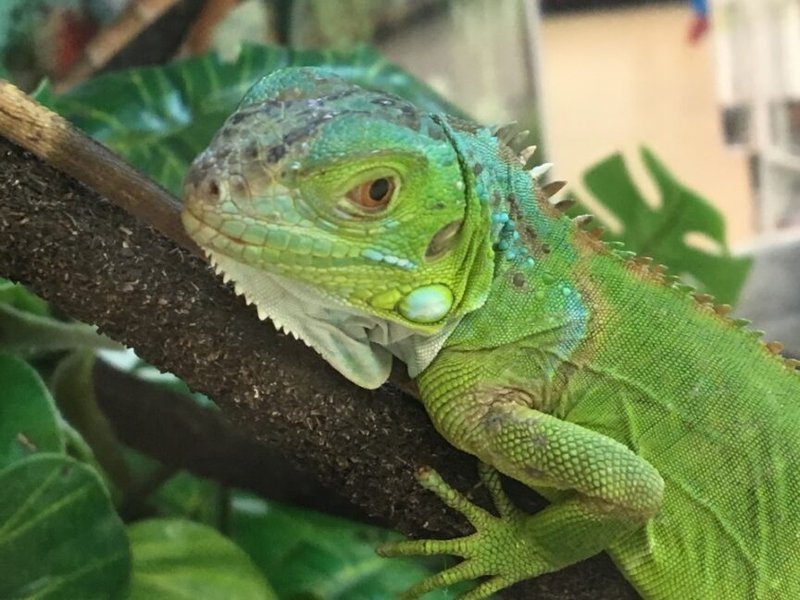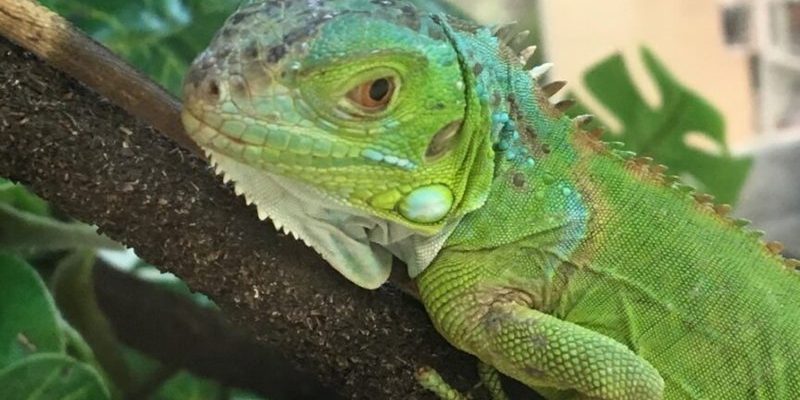
Imagine you’re out in the wild, or maybe at a pet store, and you spot a little green creature, basking under a warm light. You might wonder, “Is that a green iguana?” Learning how to identify them can be as exciting as spotting a rare bird. Let me walk you through the key features and characteristics that make identifying a green iguana a breeze.
Distinctive Physical Features
One of the first things you’ll notice about a green iguana is its striking coloration. Most green iguanas boast a vibrant green skin, but they can also show hues of blue, yellow, or even grey. The intensity of the color can vary based on their age and environmental factors. Younger iguanas generally have a brighter green shade, while older ones might appear more muted.
Another key feature is their body shape. Green iguanas have a long, slender body with a pronounced dewlap—the flap of skin under their chin that can be extended. This dewlap isn’t just for show; it plays a role in communication and temperature regulation. You might also notice their impressive tail, which can be about twice the length of their body. This tail is strong and can even be used as a defense mechanism. Just imagine a small dragon, gracefully moving through the trees—that’s what these iguanas resemble!
Size Matters: Understanding Growth Stages
Green iguanas can grow to impressive sizes! Typically, they reach lengths of about 4 to 6 feet, including their tails. This growth often occurs in stages, which can help you identify their age. Juvenile iguanas are usually around 12 to 18 inches long, and they grow quickly during their first year.
Here’s something to consider: An iguana that’s under a year old is likely to be smaller and have a more vivid green color. As they age, their colors may dull, and they may even develop markings or patterns, especially around the head. So, if you see a larger iguana with less vibrant colors, it could still be a green iguana; it just might be older!
Head Characteristics
Now, let’s take a closer look at the head of a green iguana. One of the most distinctive features is the shape. Their heads are triangular and taper to a point at the snout. This shape helps them navigate through the trees and brush of their natural habitat.
You might also notice their eyes, which are large and distinctly “bug-like.” They have a unique adaptation: a small parietal eye, or “third eye,” on the top of their head. This eye can’t see images like we do but can detect changes in light—helping them stay alert for predators. If you see an iguana basking with its head raised, it’s probably keeping an eye out for danger.
Behavioral Traits
Identifying a green iguana isn’t just about looks; their behavior tells you a lot, too. These reptiles are primarily arboreal, meaning they love to climb and spend time in trees. If you spot one perched high up, basking in the sun, you’re likely observing typical iguana behavior!
Their temperament can also help you recognize them. Green iguanas can be skittish, especially if they feel threatened. They might puff up their bodies and extend their dewlap as a warning. Sometimes, they’ll even open their mouths wide, revealing sharp teeth. But don’t let that intimidate you; they usually prefer to flee from danger rather than confront it. This flighty behavior is typical for many green iguanas!
Diet and Feeding Habits
Understanding what green iguanas eat can also help you recognize them. These reptiles are herbivores, primarily eating leafy greens, flowers, and fruits. If you’ve ever seen a salad bar specifically designed for iguanas, you’d find a mixture of collard greens, dandelion greens, and other leafy vegetables.
Feeding a green iguana the right diet is crucial for their health. An iguana that isn’t getting enough calcium might develop health problems, so it’s important to look for green iguanas with a balanced diet if you’re considering them as pets. Sometimes, pet store workers can help you identify healthy iguanas based on their diet and activity levels.
Common Habitats
When trying to identify a green iguana, knowing their natural habitats can be beneficial. These reptiles are native to tropical areas, primarily found in Central and South America, the Caribbean, and parts of the United States, especially Florida.
You might spot them in rainforests, dry forests, and near water sources, like rivers and lakes. If you’re hiking in these regions and see a flash of green among the leaves, take a closer look—it just might be a green iguana soaking up some rays! Their preference for warm climates makes them more visible during sunny days, as they love to bask.
Tips for Observing Green Iguanas
Now that you know how to identify green iguanas, here are some helpful tips for observing them in their natural habitat or even at a pet store:
- Look for their distinctive green color and long body.
- Pay attention to their dewlap and tail size.
- Observe their behavior—are they climbing or basking?
- Check out their diet if you’re at a pet store; healthy iguanas will be active and curious.
Remember, patience is key! Iguanas can be skittish, so give them space and time to feel comfortable in your presence.
In conclusion, identifying a green iguana can be a fascinating journey into the world of reptiles. From their striking physical appearance to their unique behaviors, these creatures offer a lot to enjoy. Whether you’re out in nature or considering one as a pet, understanding their characteristics helps you appreciate these vibrant lizards even more. Happy observing!

